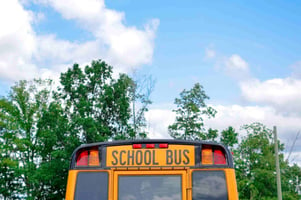When planning a fundraiser for your school there are so many different factors to take into account. Do you have enough volunteers, how can you encourage participation—the list goes on and on! But one important factor that can often be overlooked and should be a top priority, is how to make sure the fundraiser you plan is safe. Read on to learn more about the best ways to ensure safe fundraising for your students, families, and staff while raising the funds your school needs to thrive!
Always Put Safety First
- Keep parents informed. Communication is key to ensuring safe fundraising. Always keep parents in the loop about your fundraiser and any event's details, including time, location, and any safety protocols that will be in place. This transparency builds trust and allows parents to prepare their children for what to expect.
- Promote a no-bullying policy. Whether in person or online, make it clear that any form of bullying or peer pressure will not be tolerated. This creates a positive and inclusive environment for all participants.
- Provide adequate supervision. Ensure that there are enough volunteers to oversee all activities. The right volunteer-to-student ratio is crucial for managing crowds, handling emergencies, and providing general oversight. Volunteers should be briefed on safety procedures and know how to respond in case of an emergency.
- Incorporate safety training for volunteers. Before your fundraiser begins, offer a brief safety training session for all volunteers. This training can cover basic first aid, emergency response procedures, and how to handle common issues that may arise. By ensuring everyone is on the same page, you reduce the risk of accidents and increase the likelihood of a smooth, successful fundraiser.
- Discuss safety with students. Engaging your students on this topic is a key element of safe fundraising. If students are selling products in person, it's essential to discuss safety guidelines with them. Teach them not to go door-to-door alone, avoid sharing personal information, and only interact with familiar people.
- Set clear guidelines for online fundraising. With the growing popularity of online fundraisers, it’s important to establish clear guidelines for digital safety. Ensure that the platform you choose for online fundraising is secure, protecting the personal information of both students and donors. Additionally, guide students and parents on how to recognize phishing attempts or fraudulent websites.
- Secure the environment. If the fundraiser involves a physical event, make sure the venue is safe. Check for potential hazards, ensure that the space is child-friendly, and have first-aid kits and emergency contacts readily available.
- Vet third-party vendors. If your fundraiser involves external vendors or services, ensure they are reputable and have all necessary safety certifications. This includes checking for liability insurance and understanding their emergency protocols.
- Implement a sign-In and sign-out system. Some fundraisers may involve students coming and going, especially at a physical event. If this is the case for your fundraiser, implement a sign-in and sign-out system to help keep track of all participants and ensure that students leave with the correct guardians. It also provides a record in case of emergencies, allowing you to account for everyone quickly.
- Develop an emergency preparedness plan. Part of safe fundraising is planning ahead for potential issues. Your emergency plan should include procedures for dealing with injuries, lost children, severe weather, or any other unexpected situations. Make sure all volunteers and staff are familiar with this plan and know their roles in an emergency.
- Review past fundraisers for lessons learned. Take time to review past fundraising events to identify any safety issues that may have occurred. Use these lessons to improve the safety of future events.
- Conduct a post-event safety review. After your fundraiser, conduct a safety review to assess how well the event adhered to your safety plan. Gather feedback from volunteers, staff, and parents to identify any areas that need improvement. This review will help you refine safety measures for future events.
Ensuring the safety of everyone involved in your school’s fundraising activities is not just a priority but a responsibility. By implementing thorough planning, clear communication, and necessary safety measures, you can create an environment where students, families, and volunteers all feel secure and confident. Plus—safe fundraising not only protects those involved but also builds trust and encourages greater participation, ultimately leading to a more successful fundraiser!



